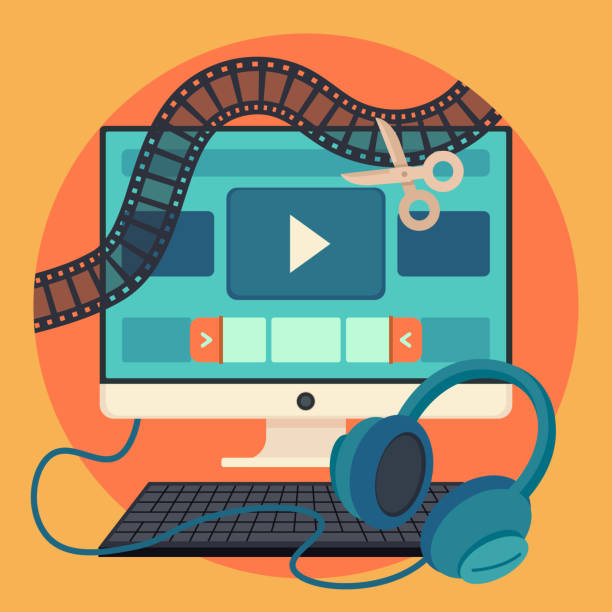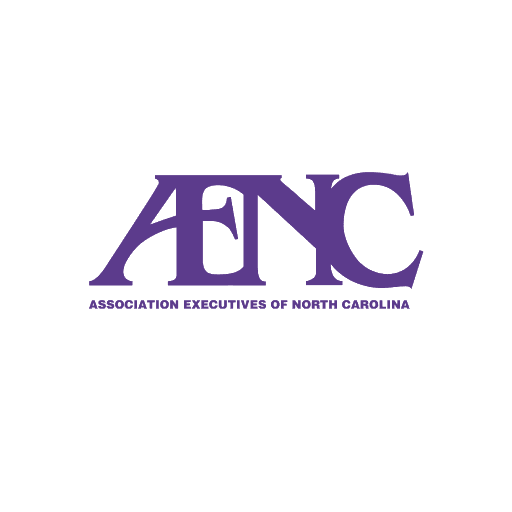A comprehensive overview to audio visual charlotte nc for organizers
Understanding the Incorporation of Audio Visual Innovation in Today's Educational Environments
The integration of audio-visual modern technology in academic settings has actually transformed the training and discovering process. Educators now have accessibility to devices that deal with numerous discovering styles, enhancing pupil engagement and partnership. The consolidation of these technologies provides both possibilities and challenges. Comprehending just how to efficiently apply these tools is necessary. What strategies can teachers use to optimize the benefits of audio-visual innovation in their class?
The Advancement of Audio-Visual Technology in Education And Learning
As instructional needs developed over the years, audio-visual technology underwent considerable transformations that reshaped the knowing setting. Tools such as film projectors and slide programs were the main methods of incorporating aesthetic components right into class. These very early technologies provided instructors with the capability to existing details dynamically, yet they were restricted in access and interactivity.
With the advent of videotape recorder in the 1970s, classrooms began to incorporate taped lessons, expanding the range of educational sources. The intro of computers in the 1980s additional transformed this landscape, permitting the production of multimedia discussions and interactive learning experiences.
The increase of the net in the 1990s marked an essential moment, making it possible for real-time access to a wide range of audio-visual products. Today, electronic tools such as interactive white boards and on the internet knowing systems proceed to enhance the academic experience, fostering involvement and cooperation amongst students.
Advantages of Audio-Visual Tools for Diverse Knowing Styles
Audio-visual tools play a necessary role in accommodating varied learning styles by enhancing visual knowing and enhancing acoustic engagement. By integrating pictures, videos, and audio, these technologies produce an even more comprehensive academic environment. This complex technique enables educators to address the different choices and requirements of pupils efficiently.
Enhancing Visual Knowing
Interaction in the discovering procedure is substantially boosted through the usage of audio-visual devices, accommodating numerous finding out styles. These tools, such as video clips, infographics, and interactive discussions, provide visual stimulations that aid understanding and retention. Aesthetic students, specifically, gain from the consolidation of images and computer animations, which can simplify complex concepts and enhance understanding. Additionally, audio-visual resources can show real-world applications, making finding out more relevant and engaging. By integrating color, movement, and noise, teachers can develop a vibrant knowing environment that records pupils' attention and promotes deeper cognitive connections. Eventually, the tactical usage of audio-visual modern technology not just sustains aesthetic learning but additionally improves the overall instructional experience for diverse students.
Improving Auditory Interaction
A substantial advantage of integrating audio-visual tools in education and learning is their capability to improve acoustic involvement amongst students. These tools, which incorporate multimedia presentations, podcasts, and interactive audio elements, satisfy various discovering designs, particularly benefiting acoustic learners (audio visual charlotte nc). By integrating noise and narration, instructors can produce immersive experiences that capture pupils' attention and reinforce comprehension. This engagement is vital, as it cultivates a much deeper understanding of the product and promotes retention. In addition, audio-visual tools can assist in collective knowing environments, motivating students to take part in conversations and share their insights. Eventually, the consolidation of audio-visual technology not just sustains auditory interaction however additionally enriches the general academic experience, making discovering much more dynamic and efficient for all trainees
Enhancing Interaction Via Interactive Discovering

In addition, gamification components, such as tests and simulations, can enhance motivation and retention, making finding out more enjoyable and reliable. These approaches not only promote cognitive involvement however also accommodate varied knowing styles, ensuring that all pupils can participate meaningfully. Therefore, interactive understanding atmospheres promote a sense of area and belonging, ultimately causing boosted scholastic end results. Via the assimilation of audio aesthetic modern technology, teachers can transform conventional class into lively spaces where trainees grow and proactively form their academic journeys.
Bridging Theory and Technique With Multimedia Resources
Multimedia sources act as a crucial web link between theoretical principles and sensible application in academic settings. By improving interaction, promoting collective knowing experiences, and supporting diverse learning designs, these tools create a much more inclusive and dynamic knowing environment - audio visual charlotte nc. This method not only promotes much deeper understanding however likewise prepares pupils for real-world obstacles

Enhancing Interaction With Multimedia
Involvement in educational setups considerably increases when trainers integrate multimedia resources right into their teaching methods. Using video clips, podcasts, and interactive presentations improves the discovering experience, permitting trainees to get in touch with the product on multiple degrees. Multimedia sources accommodate numerous learning styles, providing aesthetic, acoustic, and kinesthetic stimuli that can hold students' interest better than typical lecture techniques. Furthermore, these resources can streamline intricate concepts, making them extra easily accessible and remarkable. By integrating multimedia, educators can create a dynamic classroom atmosphere that cultivates interest and motivates learners. Inevitably, the strategic use of audio-visual modern technology serves to bridge the space between academic knowledge and practical application, enriching the instructional experience for both teachers and students.
Assisting In Collaborative Learning Knowledge
Numerous studies show that joint learning experiences markedly enhance trainee outcomes when integrated with multimedia sources. Multimedia tools facilitate interaction among trainees, permitting them to take part in problem-solving and critical believing collectively. By utilizing video clip conferencing, collaborative systems, and interactive discussions, instructors develop environments conducive to synergy and shared discovering. These innovations allow trainees to connect their ideas efficiently and get instant feedback, promoting a much deeper understanding of the topic. On top of that, multimedia resources can offer intricate principles in more digestible layouts, advertising discussion and collaboration. Consequently, the mix of collective discovering and audio-visual innovation not only enriches the instructional experience yet also prepares pupils for real-world teamwork dynamics, emphasizing the significance of teamwork and collective knowledge construction.
Supporting Diverse Understanding Styles
While conventional teaching methods frequently deal with a minimal series of finding out choices, the combination of audio-visual technology supplies a more comprehensive method to education and learning. By utilizing multimedia resources such as videos, interactive simulations, and electronic discussions, instructors can attend to various discovering styles, consisting of visual, acoustic, and kinesthetic. This flexibility allows for separated direction, enabling trainees to engage with web content in ways that reverberate with their private preferences. Additionally, audio-visual tools can promote much deeper understanding by giving numerous representations of complicated ideas. Therefore, students who may battle with traditional methods can locate alternate paths to success, fostering a more equitable understanding setting that sustains scholastic accomplishment for all students.
Obstacles in Executing Audio-Visual Innovation
Although audio-visual modern technology holds excellent assurance for boosting academic experiences, its application typically runs into substantial obstacles. One primary issue is the financial burden connected with purchasing and preserving such devices, which can strain budget plans, specifically in underfunded establishments. Furthermore, poor training for educators can prevent efficient assimilation, leaving them ill-prepared to make use of the innovation completely. Technical problems, such as software malfunctions and compatibility problems, might likewise interrupt lessons and discourage both teachers and students. In addition, varying degrees of trainee accessibility to modern technology outside the class can develop variations in learning possibilities. Finally, the possibility for over-reliance on technology might diminish vital training techniques, ultimately limiting the instructional experience. Dealing with these obstacles calls for a detailed technique, consisting of ample financing, specialist growth, and fair access to sources, to guarantee that audio-visual technology can be leveraged properly in today's academic settings.
Ideal Practices for Integrating Innovation in the Classroom

In addition, cultivating an interactive setting via collective devices encourages student engagement and involvement. Utilizing varied audio-visual sources deals with different learning designs, accommodating visual, auditory, and kinesthetic students. Frequently examining the influence of technology on student knowing aids instructors refine their approaches and adjust to changing needs. Ultimately, involving trainees in the selection of technology advertises possession and motivation. By adhering to these ideal techniques, instructors can create a vibrant class environment that effectively integrates innovation and boosts the academic experience for all pupils.
The Future of Audio-Visual Modern Technology in Education And Learning
As class significantly welcome modern technology, the landscape of audio-visual devices in education and learning continues to website progress (audio visual charlotte nc). Future developments are anticipated to concentrate on greater interactivity and customization, enabling educators to tailor learning experiences to specific pupil demands. Advancements such as enhanced fact (AR) and digital fact (VIRTUAL REALITY) will likely provide immersive learning environments, boosting student interaction and understanding
Additionally, expert system (AI) is poised to play a significant function in audio-visual technology by offering real-time responses and flexible understanding paths. This assimilation may help instructors recognize and attend to trainee obstacles better. Cloud-based systems will certainly assist in less complicated access to resources and partnership amongst students and instructors, despite area.
In enhancement to these technological developments, professional development for instructors will certainly be vital, ensuring they are outfitted to make use of these tools successfully. In general, the future of audio-visual technology in education and learning promises to create even more vibrant, inclusive, and impactful knowing experiences.
Frequently Asked Concerns
Exactly How Can Educators Choose the Right Audio-Visual Equipment for Their Class?
Picking ideal audio-visual tools calls for teachers to analyze their educational objectives, take into consideration trainee demands, evaluate available technology, and seek recommendations from peers or experts, guaranteeing devices successfully boost learning and engagement within their specific class environment.
What Budget Considerations Are There for Carrying Out Audio-Visual Innovation?
Budget plan considerations for carrying out audio-visual innovation consist of initial purchase prices, upkeep costs, training for personnel, and potential software application licensing fees. Additionally, lasting financial investment in updates and replacements must additionally be factored right into monetary planning.
Are There Specific Training Resources for Teachers on Audio-Visual Tools?
Many establishments supply training sources for instructors on audio-visual devices, consisting of online training courses, workshops, and training overviews. These sources intend to improve instructors' skills and confidence in effectively integrating modern technology into their teaching methods.
Exactly how Do We Gauge the Efficiency of Audio-Visual Modern Technology in Learning?
Measuring the performance of audio-visual technology in discovering entails evaluating student involvement, comprehension, retention rates, and total academic efficiency. Surveys, analyses, and observational research studies can give important insights into its influence on academic results.
What Prevail Mistaken Beliefs About Audio-Visual Innovation in Education?
Usual misconceptions concerning audio-visual innovation in education include the belief that it guarantees engagement and learning outcomes, in addition to the presumption that all trainees profit equally, overlooking private discovering choices and requirements.